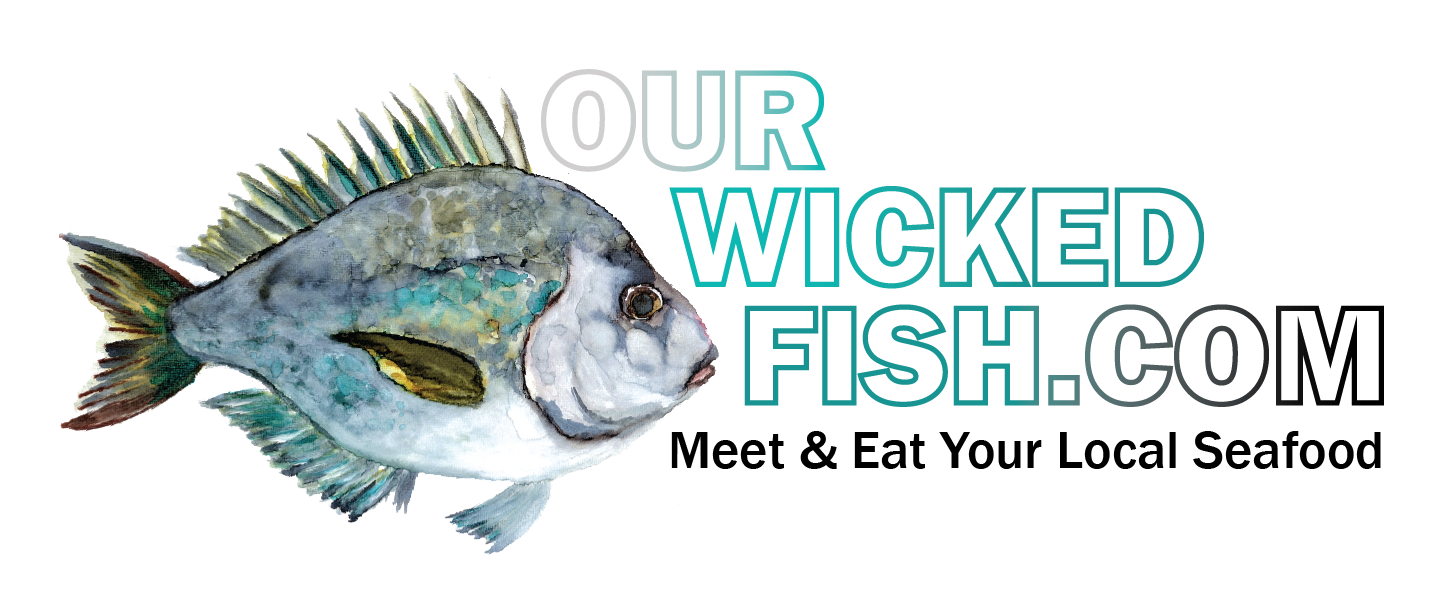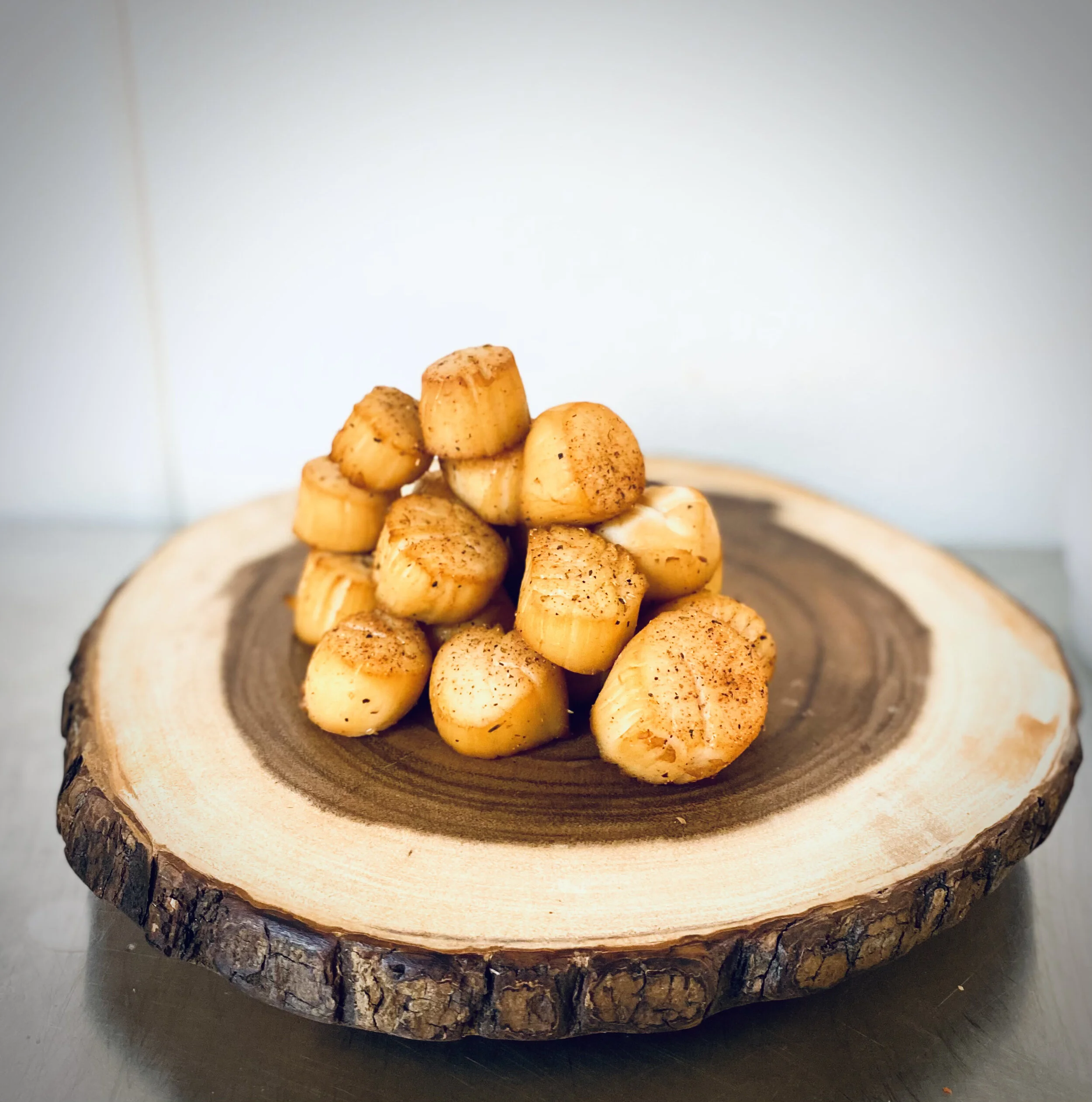Feeding the Future with Community Supported Fisheries - Cape Ann Fresh Catch
By Phoebe Gelbard
Lately, it seems that cancel culture has its eye on seafood. Sigh. Recent documentaries and social media campaigns are showing the dark side of international large-scale industrial seafood operations. But these documentaries and social media campaigns always leave out a key fact: that ethical, feel-good, sustainable seafood does exist! In the United States, consumers are becoming more conscientious seafood consumers by ditching the imported seafood and moving to the catch coming from these committed amazing businesses called Community Supported Fisheries (CSFs). Yes!
Is CSFs a new term for you? Great! Community Supported Fisheries (CSFs) operate similarly to Community Supported Agriculture (CSA) programs where a consumer pays ahead of time for a weekly portion of the farm’s crop yield. With CSFs, you just replace the crops with local seafood!
TJ Peckham, a native of Massachusetts’ North Shore, is here to show you the benefits of purchasing seafood from a CSF such as Cape Ann Fresh Catch. Because of Cape Ann Fresh Catch, consumers throughout New England receive seafood that is affordable, sustainable, and of exceptional quality every week, all year round. Their business model allows fishermen to focus on quality, not quantity, and the story of Cape Ann Fresh Catch is one everyone in Massachusetts should know.
CAFC tables at the Cape Ann Farmers’ Market at Stage Fort Park in Gloucester, MA.
To The Last Frontier & Back
TJ grew up in Pigeon Cove, Rockport. Being from a coastal fishing community, TJ has never strayed too far from the sea. After spending some time long-lining for cod up in Dutch Harbor, Alaska, he took a “15-year hiatus” from the fishing industry. However, a childhood connection just recently reeled him back into fishing in an unexpected but welcome turn of events.
Melissa Marshall, also from Pigeon Cove, has been friends with TJ since childhood. Melissa’s mother, Donna Marshall, has been running Cape Ann Fresh Catch (CAFC) for years, and Melissa returned to the North Shore to help run the business back in early 2020. “Melissa and I have both had our own journeys and travels. We’ve both found ourselves back in Gloucester and Rockport wanting to catch up and work together,” TJ explains.
When Melissa reached out to him with an opportunity to help run CAFC, TJ says that the timing was impeccable. “Little did we know, after years of chatting and wanting to work together, that the seafood industry was going to be the platform we'd be working on together. It's definitely been a silver lining of the whole COVID situation,” TJ adds. Since Melissa and TJ have stepped in, they have built upon the strong foundation established by Donna and those who started the business.
TJ (left) and Eli (right) of CAFC work together to pack the fish that go out for delivery every day.
North Shore Fish to Your Door
TJ explains that CAFC was started by the Gloucester Fishermen’s Wives Association (GFWA) as a way to get fresh, sustainably sourced seafood from the fishermen who needed a market for the customers who can’t get to the dock to pick it up. ”They were creating a platform we needed that didn't exist,” TJ says.
In a similar way to Community Supported Agriculture (CSA) programs, CAFC as a Community Supported Fishery (CSF) has filled a unique and vital niche in the sea-to-table supply chain. Now, CAFC is the largest and second-oldest CSF in the country, and their reach covers the majority of eastern Massachusetts (with the exception of Cape Cod and the islands).
CAFC operates on a seasonal basis, with six eight-week seasons throughout the year. Just like with an agricultural CSA, individuals who sign up for a share become members of the CSF. Members have the option of choosing a one-pound fillet, two-pound fillet, or whole fish share for the entirety of a given season, and each week, they receive a different type of seafood in that amount.
Beyond building the physical infrastructure and close relationships needed to get local seafood into the hands of hundreds of consumers, CAFC works to educate its customers on the stark differences between fresh, caught-that-day seafood and what is commonly sold in supermarkets. CAFC even provides customers with instructional videos like how to fillet a whole fish.
Crew members, including Nicolo “Nic” Vitale, out at sea. Nic worked with CAFC several years ago and passed away last year while fishing.
Milton at CAFC processes fish using a machine that skins the fillets of the pollock pictured here.
Chopped: Seafood Edition
Unlike going into a market and choosing from an array of options, TJ explains that there is an element of mystery involved in their CSF. “When you order our seafood, the day you pick up your share is the day you find out what type of fish it’s going to be.” On the sourcing side of the operation, the folks running CAFC also find out what they will be distributing to their members on the same day that deliveries occur. This ensures that they are purchasing fish that have been caught that morning and will end up on members’ tables later that day.
Sometimes the fillet and whole fish offering are the same, other times they differ; occasionally, the share includes more than one type of fish. “It’s about what we can get fresh and what’s sustainable that day off of the boats,” TJ notes. Once he knows the ‘catch of the day’ down at the docks, TJ sends a text message to the office where Caitlin emails the daily shareholders and Zoe posts on social media. The email to members includes the type of fish in that day’s share, recipes and ideas for how to prepare it, and the name of the boat from which it is being caught. “That way, we’re giving the fisherman a shout-out,” says TJ.
TJ prepares a batch of scallops for smoking, a product for Twin Light Smokehouse
Expanding the Horizon
From the beginning, CAFC has given its members a wide variety of seafood items to choose from. “We always have other options available besides just the fish of the day, such as locally-caught day boat scallops and Jonah crab meat,” TJ explains. These choices are “sustainable, plentiful, and delicious,” as Melissa says, and TJ adds that there are bold (and delicious) plans in the works for incorporating more products into the lineup.
In order to entice members to continue supporting CAFC, TJ explains that they run a series of bi-monthly specials. These items are truly unique and notable, ranging from stuffed clams made by a member of the local community to Gulf shrimp, from swordfish to lobster. Last summer, CAFC entered a new era with the acquisition of a smokehouse. Melissa learned the tricks of the trade from Paul “Sasquatch” Cohan, a seasoned smoker and the founder of Sasquatch Smokehouse.
This led to the creation of a new brand called “Twin Light Smokehouse,” named after the local twin lights of Thatcher Island. Melissa and Ali of CAFC run the smokehouse operations, and they “continue the Sasquatch brand” through their work. TJ notes that this development has been a game-changer for their productivity and marketability. “We’re always coming up with new smoked fish ideas, and it’s given us a new market because we’re starting to sell our smoked product retail. It’s a lot of wheels in motion in the last year and a half.”
A beautifully-plated stack of sea scallops smoked by Twin Light Smokehouse.
As we learned from Ryan and Julia Smith of Signature Oyster Farm, shellfish farmers are among those in the seafood industry who have been devastated by the COVID-19 pandemic. TJ says that Twin Light Smokehouse is working on a new endeavor to help revitalize small oyster farmers’ operations.
A few months ago, TJ and Melissa were alerted to the “oyster crisis” happening on the South Shore, and the collective brainstorming began. A handful of weeks later, the folks at CAFC and Twin Light Smokehouse came up with “S.O.S.,” a smoked oyster spread that is both delicious and is helping oyster farmers throughout the region reclaim their livelihoods. S.O.S. was released just a few days ago on May 17th, and Twin Light Smokehouse products can be found at several locations in the greater Boston area (they also ship anywhere in the country!).
Smoked mussels and more from Twin Light Smokehouse
A System of Symbiosis
Looking ahead, the reach of CAFC is growing, which is a positive trend for everyone involved throughout the supply chain. “In terms of sustainability, it’s a symbiotic relationship, which is something we try to carry across every relationship we construct,” he explains. “It starts out in the ocean with boats that are fishing sustainably, and that’s all we offer.”
Beyond the ecological benefits of their sourcing practices, TJ explains that this symbiotic relationship extends to the socioeconomic impacts suffered by many regional fishermen and local business owners throughout the pandemic. Once the restaurant industry shut down, CAFC opened up an alternative market for these fishermen to sell their catch. Additionally, many of the distribution sites for their CSF are at local stores, farms and farm stands, and small markets, encouraging members to shop at these places when they pick up their share each week. With this kind of model, there is more than enough room for everyone to grow and thrive. As TJ says, “When you join a CSF, you become a part of a team that’s making our fishing industry more sustainable and more symbiotic with your community.”
A message from the author
Thank you to TJ and the incredible crew at CAFC for continuing to build a business that lifts up the entire community while serving as a model for how seafood can be consumed locally and sustainably for generations to come.









